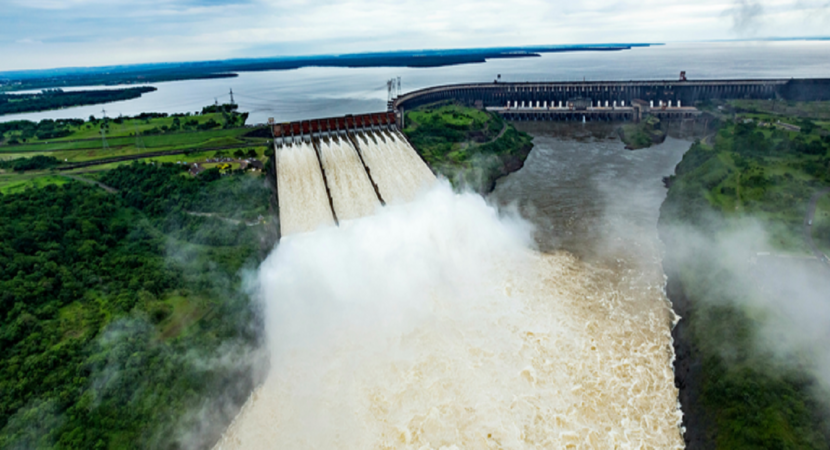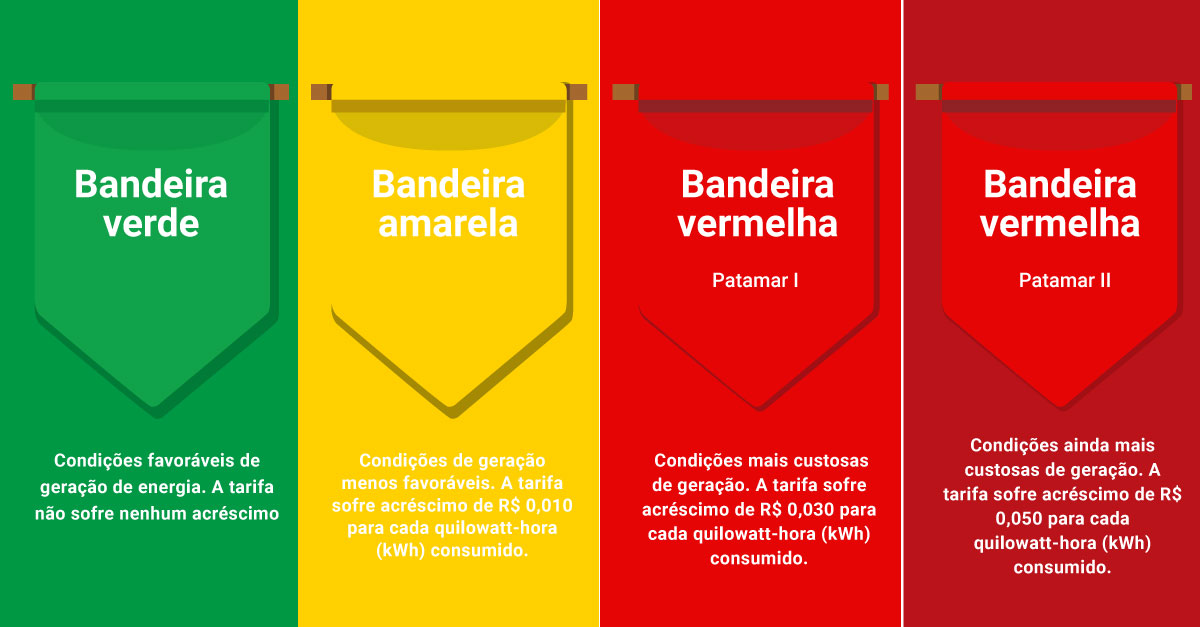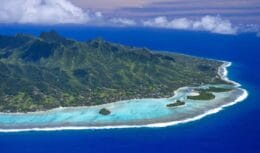
The Federal Government has decreed the end of the Water Scarcity flag, developed by Aneel, to mitigate the impacts generated by the water crisis. With the end of the banner, the electricity bill will be reduced by 20%.
It was announced on Wednesday (06), by the President of the Republic, Jair Bolsonaro, the end of the Water Shortage flag, therefore, the green tariff flag will be valid for all from April 16th. According to the Ministry of Mines and Energy (MME), the estimate is that this flag, announced by the Federal Government, will remain until the end of this year. The end of the Water Shortage flag, scheduled for this month, was already an expectation of the Federal Government, which, with the measure announced by the President of the Republic, anticipated the reduction by 15 days. Therefore, the electricity bill of Brazilian consumers will have a 20% reduction next month.
Flag Water Scarcity added R$ 14 for every 100 kWh
Since September last year, the flag water scarcity, which added R$ 14,20 for every 100 kWh consumed in the electricity bill, came into effect. This extra amount was added to offset electricity costs, which had become more expensive due to the period of water scarcity, which was the worst in 91 years.
Currently, only consumers who receive benefits from the Social Electricity Tariff do not pay the Water Scarcity flag fee on their electricity bill and pay the tariff flag published by the National Electric Energy Agency (Aneel) every month. In addition, those who live in areas not connected to the SIN, as is the case in the state of Roraima, are also exempt from the tariff flag on their electricity bill.
Last year, the Water Scarcity banner was developed, with the aim of covering the costs of generating, distributing and transmitting electricity during the dry season, when it was necessary to activate the thermoelectric plants, which generate energy for an above-average value. According to the MME, the actions carried out by the Federal Government, alongside the arrival of the rains, allowed the thermoelectric plants to be reduced and turned off.
Renewable energy sources contribute to the reduction in the electricity bill of Brazilians
The expansion of generation from hydroelectric plants and sources such as solar and wind favor lower costs during the next dry period, which runs from next month until November. These aspects will contribute to lower amounts on the electricity bill.
The flag system developed by Aneel, signals the real cost of electricity, making it possible for consumers to use electricity better. The operations are simple and indicate whether the energy will be more expensive or cheaper depending on the generation conditions.
Find out how each color of the flags works and what their values are

The Green Flag indicates favorable generation conditions and there is no increase. The Yellow flag indicates less favorable generation conditions, with the rate being increased by R$ 0,01874 for each kWh consumed. The red flag is divided into two levels, the first presents more costly generation conditions, with the tariff suffering an increase of R$ 0,03971 for each kWh consumed.
Level 2 has even more expensive generations and the electricity bill has an increase of R$ 0,09492 for each kWh consumed. Under the Water Shortage banner, which the Federal Government recently finalized, the electricity bill is increased by R$14,20 for every 100 kWh consumed.
Its end represents more savings for citizens and shows the Federal Government's commitment to efficient energy supply, prioritizing quality and lower cost for the Brazilian people.












Air Force F-16 fighters…
True friend, what they shot down were…
Air Force F-16 fighters…
I would like to know what planet you live on…
Air Force F-16 fighters…
Everything is fine, 100-year secrecy,…
Air Force F-16 fighters…
Well... It's flying scrap... Typical...
Air Force F-16 fighters…
Which genocide are you talking about? Than…
Spectacular, especially the price. I've seen others...
Very poor project with the final station…
I work in the construction area, bricklayer, painter…
Work in the construction sector
I am a Professor/Historian interested in the area of…
Have you ever driven a shark at night in…
This shipment is by an agency that…
I work with hydraulics, pneumatics, maintenance work…